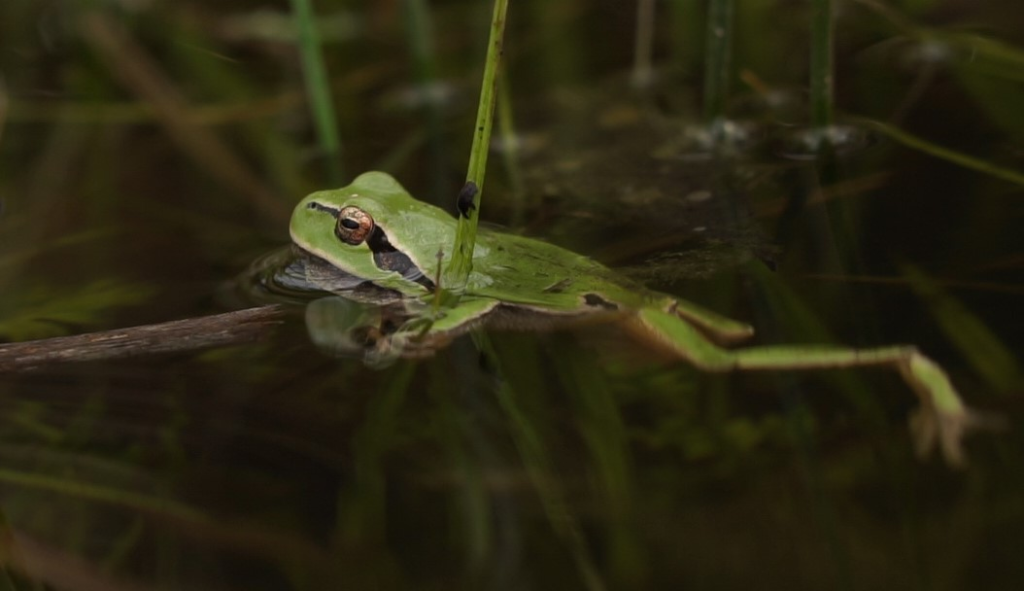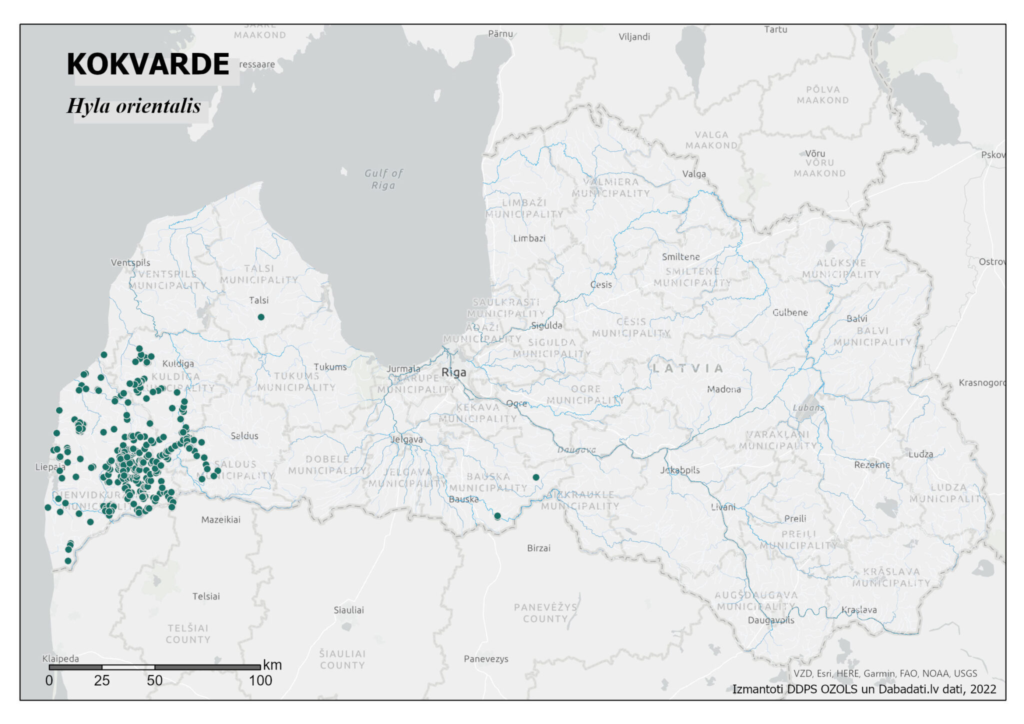Protected species of the month - common tree frog
At a time when the greyness of November alternates with a beautiful, white blanket of snow, we have chosen the bright and expressive common tree frog (Hyla orientalis) as the protected species of the month!

During the 20th century, the species actually disappeared in Latvia due to the increase in the intensity of agricultural activity. Since then, the entire modern population of Hyla orientalis in Latvia has been created thanks to the reintroduction of the species. Since 1987, the Ecological Laboratory of the Riga Zoo has been reintroducing the species in Latvia for several years, using specimens caught in Belarus. The reintroduction measures have paid off and the artificially created population in Liepāja has strengthened and is able to self-renew.

The common tree frog is easy to spot thanks to its loud voice and roaring calls that can be heard even more than 1 km away! The frog can reach length of up to 5 cm and the coloring of its back depends on the environment in which it lives. In cooler conditions it will be brown, but during a period of activity it may acquire the recognizable bright green color. The sides of the frog's body are decorated with a dark stripe, while the tips of the fingers have small suction cups that allow it to move along vertical surfaces.

The common tree frog is a terrestrial animal that stays in water bodies only during the breeding season, which begins around the end of April and ends in the first half of June. Spawning sites are most often found in ponds surrounded by frequent bushes and willows. The maximum life span of this species in nature is 7-8 years, but in captivity the maximum recorded life span reaches 22 years.

Various species protection and reintroduction measures are also taking place in other parts of Europe. For example, in Germany, Belgium and the Netherlands, the population of the common tree frog species is restored within LIFE program projects.
